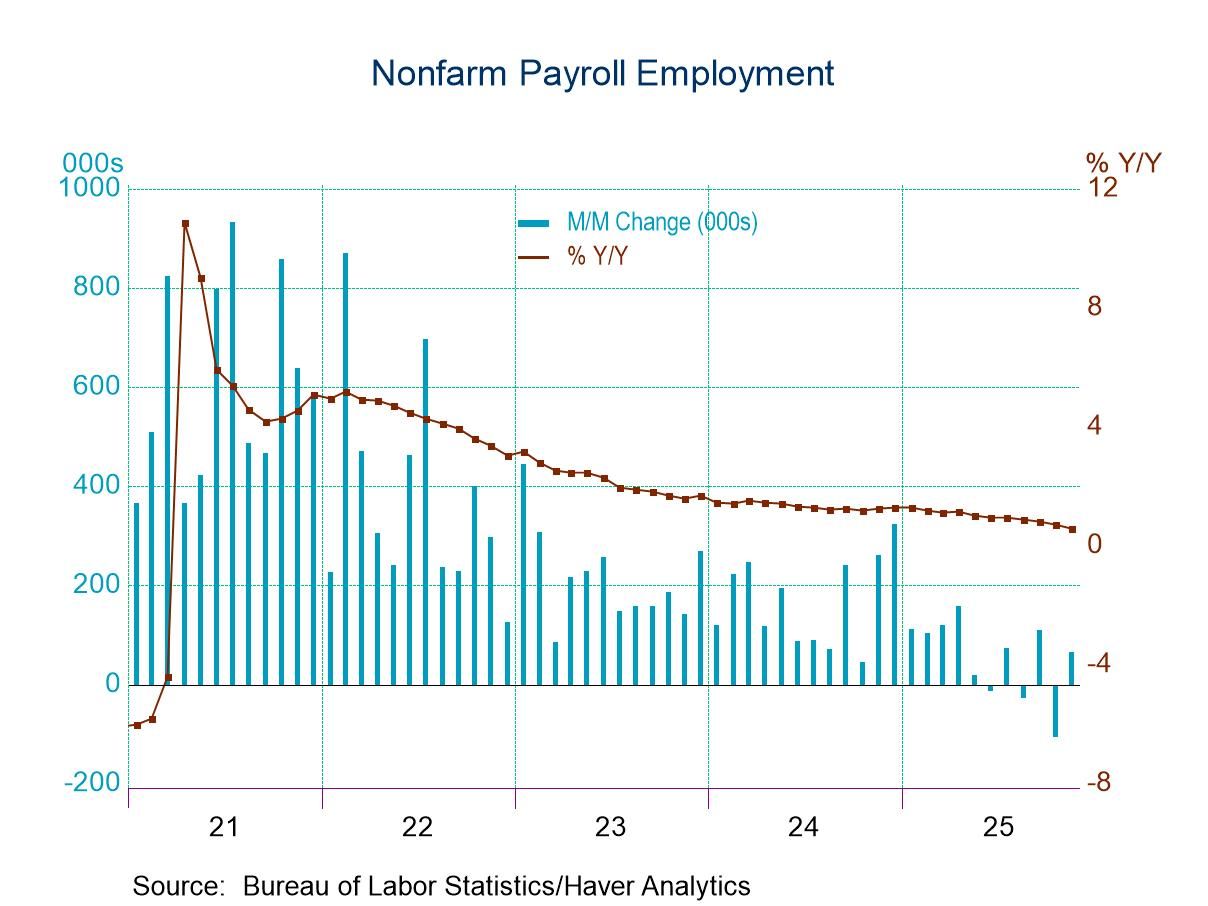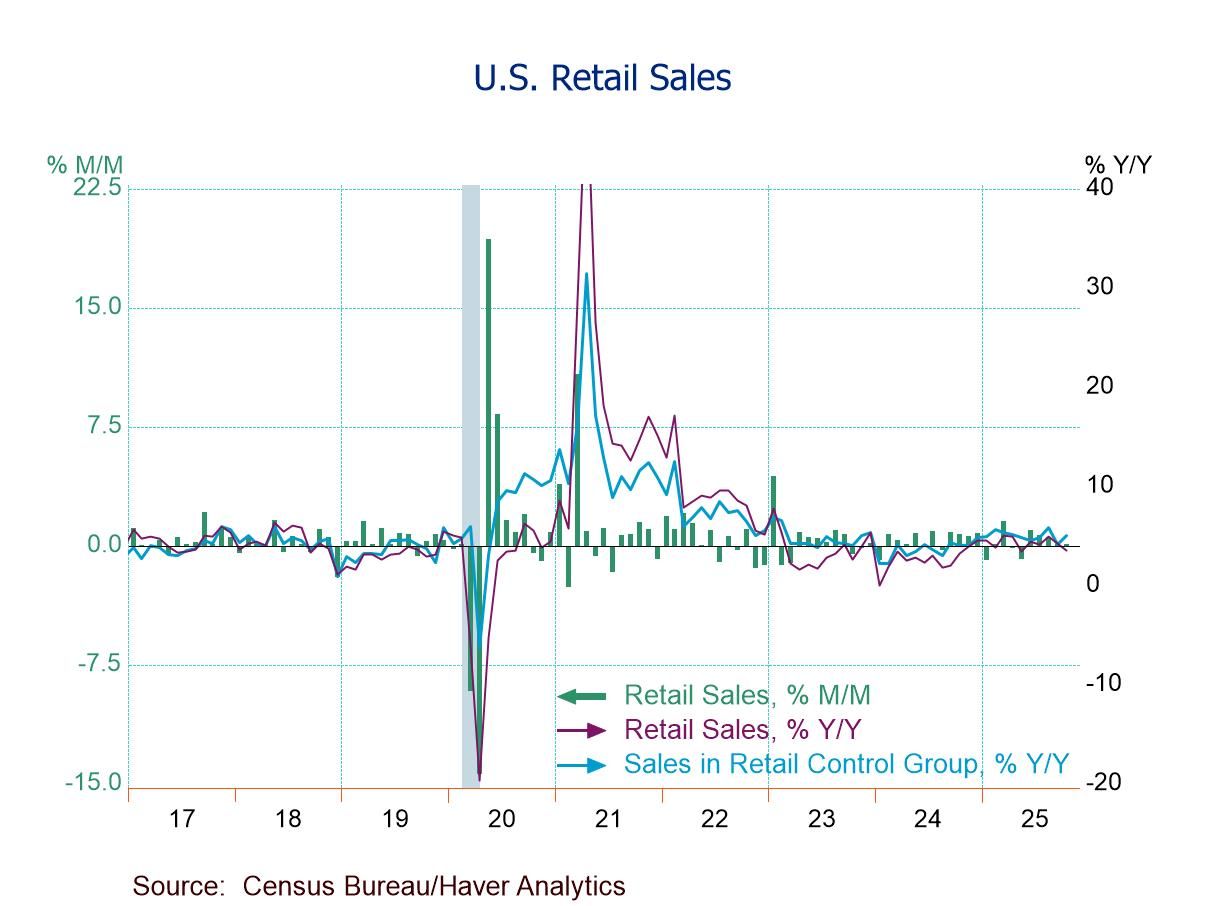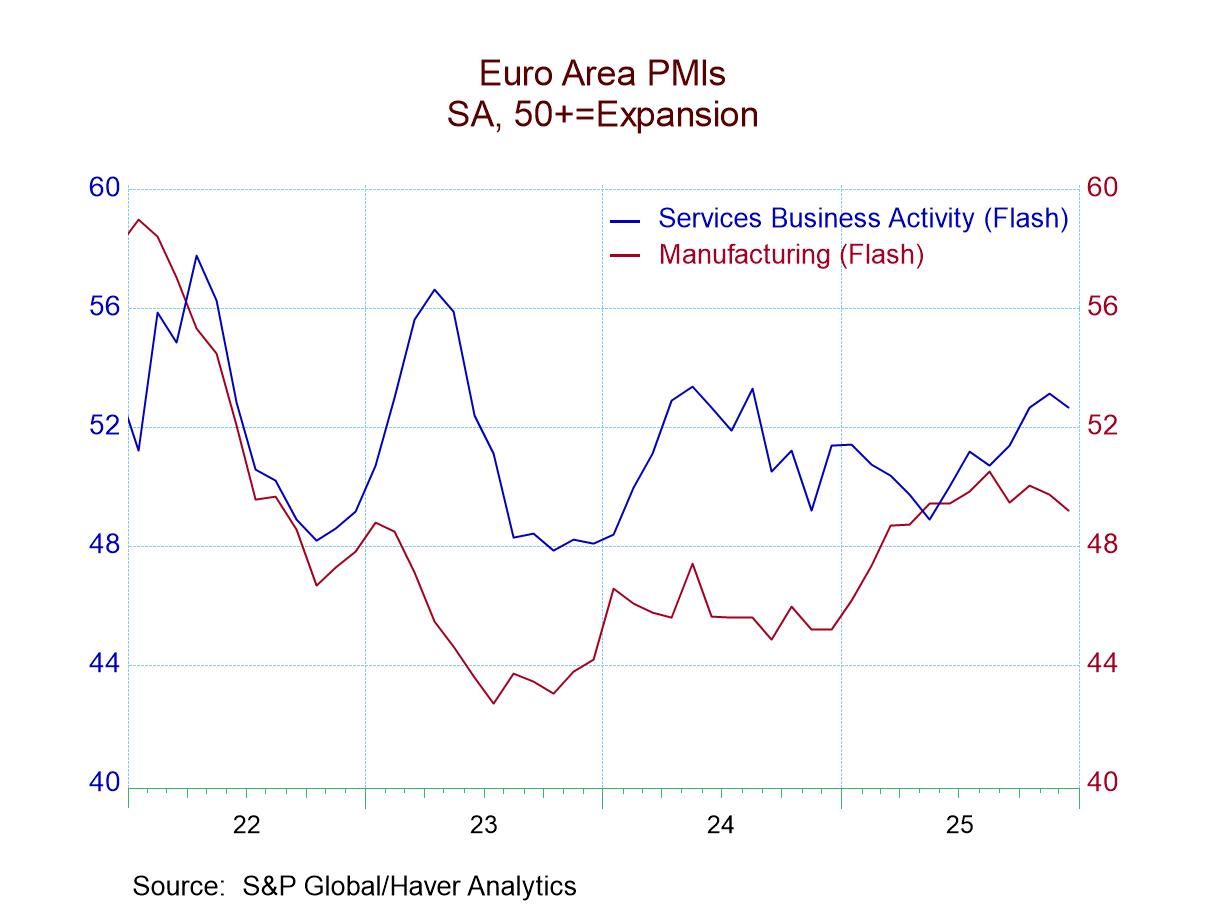 Global| Jul 25 2008
Global| Jul 25 2008Excluding Energy German Export and Import Prices Break Through 2% Mark
Summary
The German CPI ex-energy inflation rate is still very well-behaved with inflation on that score below 2% over 12-months and nearer to 1% over three- and six-months. For the PPI ex energy trends are worsening, however. Export and [...]

The German CPI ex-energy inflation rate is still very
well-behaved with inflation on that score below 2% over 12-months and
nearer to 1% over three- and six-months. For the PPI ex energy trends
are worsening, however. Export and import prices excluding the effects
of energy – just reported - are both up by over 2% over twelve months.
On shorter horizons where they are accelerating sharply, those trends
may be real but since the data are not seasonally adjusted those
calculations are not so reliable.
Still, what is disturbing about those trends is the clear
acceleration in the ex-petrol inflation rates over those less reliable
but shorter horizons.
On balance German inflation does not seem imperiled. But the
ECB caps overall EMU inflation, not German inflation and as one of the
more price-stable countries in the Zone Germany still posts a headline
CPI that is up by 3.3% and an ex-energy result that is up by 1.9%. The
ex-energy number falls below the ECB CPI cap rate, but the ECB does not
have any ceiling except for the full CPI number. Perhaps behind the
closed doors of the meeting room the ECB Council takes some solace in
ex-energy inflation being better behaved, but not in public.
More ominously, the export and import prices for Germany –
despite ongoing euro strength- suggest that more inflation pressures
may be leaking in apart from energy. All in all this is not a great
result for the month, although the report has its spots for those who
may wish to mount an argument of optimism. I suspect the ECB and the
usual band of inflation adverse German observers will see little good
in this report.
| German International and Domestic Inflation Trends | |||||||
|---|---|---|---|---|---|---|---|
| % m/m | % Saar | ||||||
| SA: | Jun-08 | May-08 | Apr-08 | 3-Mo | 6-Mo | 12-Mo | Yr-Ago |
| Export Prices | 0.7% | 0.4% | 0.1% | 4.9% | 4.7% | 2.7% | 2.0% |
| Import Prices | 2.1% | 2.3% | 0.4% | 20.6% | 13.6% | 8.8% | 1.4% |
| NSA | |||||||
| Exports excl-Petroleum | 0.5% | 0.3% | 0.1% | 3.4% | 4.6% | 2.3% | 2.0% |
| Imports excl-Petroleum | 0.5% | 0.6% | 0.3% | 5.5% | 6.3% | 2.5% | 1.6% |
| Memo: SA | |||||||
| CPI | 0.4% | 0.5% | 0.0% | 3.4% | 3.1% | 3.3% | 2.0% |
| CPI excl Energy | 0.2% | 0.0% | 0.0% | 0.8% | 1.2% | 1.9% | 2.0% |
| PPI | 1.0% | 1.1% | 0.9% | 12.6% | 9.4% | 6.6% | 1.8% |
| PPI excl Energy | 0.4% | 0.4% | 0.2% | 3.6% | 4.2% | 2.9% | 2.8% |
Robert Brusca
AuthorMore in Author Profile »Robert A. Brusca is Chief Economist of Fact and Opinion Economics, a consulting firm he founded in Manhattan. He has been an economist on Wall Street for over 25 years. He has visited central banking and large institutional clients in over 30 countries in his career as an economist. Mr. Brusca was a Divisional Research Chief at the Federal Reserve Bank of NY (Chief of the International Financial markets Division), a Fed Watcher at Irving Trust and Chief Economist at Nikko Securities International. He is widely quoted and appears in various media. Mr. Brusca holds an MA and Ph.D. in economics from Michigan State University and a BA in Economics from the University of Michigan. His research pursues his strong interests in non aligned policy economics as well as international economics. FAO Economics’ research targets investors to assist them in making better investment decisions in stocks, bonds and in a variety of international assets. The company does not manage money and has no conflicts in giving economic advice.






